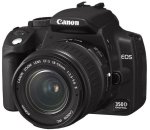August 8, 2007, 6:50 AM
Digital photography : The different technologies
 There are many types of digital cameras, and people who are not used to them will quickly get lost in the different offerings. I therefore decided giving here some explanations to help potential buyers’ orienting their choices.
There are many types of digital cameras, and people who are not used to them will quickly get lost in the different offerings. I therefore decided giving here some explanations to help potential buyers’ orienting their choices.
The article being very long, it is not on this page. It describes different types of cameras, compact, bridge and SLR, their advantages and disadvantages.
THE COMPACT : an amateur camera, not bulky, designed to fit in the pocket, and to be easy to use. It therefore is generally 100% automatic, allow you to a take a picture just by pressing a button. Easy to use but enabling you to chose between the least possible settings, this kind of not too expensive hardware is good for family / holiday pictures. Framing is done through an LCD screen, with variable sizes. There can also be an optical device for that, but it wont be precise, as what you see in it is not coming from the camera’s lenses but from another hole. This kind of camera is filled up with gadgets: you can for example also shoot some bad quality (because of how small it is) movies, sometimes use it as a webcam… Very interesting for the masses, it still is a low quality product because of the smaller size (less space less high tech electronics), it is generally slow in taking the pictures (be careful with motion blur), its optic is low quality, captors are low quality because of which you end up with more grain in your pictures…
THE BRIDGE: between SLR and compact, it is better for those who have a deeper interest in photography: much bulkier than a compact, and more expensive, this kind of hardware has a close to SLR optical system, which enables you to take better quality pictures. It also enables you to fiddle with settings much more than on compacts if you want to, especially in terms of depth of field and speed. As on compacts, framing is done electronically. You use an LCD screen, and if there is an optical framing device, it is not very precise. On some models you will find some very interesting options inhereted from SLRs, such as the RAW image format, which creates images which use up a huge amount of space but enable you to manipulate settings AFTER the picture has been taken, without deteriorating the quality (contrast, white balance). You can for example recover a blue sky and the clouds in it instead of the white sky you initially get with default settings. On this kind of camera you will also find the same kind of gadgets as on compact cameras, but generally with a better quality. Meaning these cameras can be a good alternative to video cameras as well. They therefore have a very good value for money, but you cannot change their lenses, you have to stick with the one they are sold with, some of them enable you to add a flash rather than use the integrated one but not all of them. Their captors are better than compacts’, but not as good as SLRS’.
SLR : The camera for perfectionists / enthusiasts. If you want the biggest freedom of settings, the best optical quality, that’s what you need. But be careful as the so-called entry-level ones are already extremely expensive, and I’d rather call it semi-pro. Shooting speed is very quick just as powering on is (which is not the case for lower range cameras). Framing is done through a mirror, what you see in your optical device is exactly what is going to be shot, as you see it through the camera’s lenses. The lenses can be interchanged, thus enabling you a more or less big depth of field. Accessories are generally retro-compatible, with non digital SLRs, especially lenses. It’s the case for Canon digital SLRs, thus enabling you to keep your old accessories if you already had an SLR camera. If you like gadgets however, you won’t like these cameras: no video shooting, no framing through the LCD screen… These cameras do have an LCD screen, but that’s only for watching the pictures you have already taken. Another disadvantage is the very high cost, considering the very fast evolution of digital photography. Digital photography has many advantages (looking and modifying the pictures on a computer, possibility of selecting your pictures before sending them to be developed / different ASA norms in the same camera whereas a kind of film was only good for interiors and another kind only for exteriors) it isn’t quite the quality of films in terms of precision. 8 megapixels are not enough for a poster. But enable you an A5 development just as good as if it had been shot on a film.
BRANDS: I would recommend those which were successful with film-based cameras ( Canon, Nikon, Olympus, Pentax ). Brands famous for electronics but not photography generally are full of gadgets, but not good at taking pictures (bad lenses, bad flash…)
Sony SLRs are an exception since they use Konica Minolta technology in conjunction with their electronics.
Moi de mon côté, j’ai un reflex numérique Canon EOS 350D ( aujourd’hui remplacé par le 400D ) dont je suis très satisfait.
Pixmania : One of the best websites for buying electronic devices online, and they also have online photo development. They have affordable prices for a good quality.












